
Heliocentric declination
written by Sergey Tarassov
There is a lot of misunderstanding associated with heliocentric declination. I have written about this issue here: http://www.timingsolution.com/TS/Mini/7/index.htm
When I wrote that, I believed that there is nothing to add to it. Well, the more we live the more we learn. In this article I would like to continue this subject. Special thanks to Harvey Hahn and Jim Mertes for providing the information about the coordinates of the True Solar Equator that makes possible to calculate True Heliocentric Declination!
To calculate the heliocentric declination correctly, we have to deal with Solar Equator. This is a plane that is derived from the Sun's rotation, we call this coordinate system the True Solar Equator. This system is formed exactly the same way as the Earth Equatorial system, which is derived from 24 hours' Earth rotation. As the Sun is not a solid body, its rotation is irregular: around the Solar Equator the period of rotation is about 26 days while closer to the poles this period increases up to 33 days.
This true Solar equator is inclined to the Ecliptic at the angle of 7 degrees 15 minutes (obliquity to the Ecliptic). This is the main angle for the heliocentric declination (similar to 23 degrees angle when we deal with Geocentric declination). The Heliocentric declination shows how far a planet is situated from the True Solar Equator. Look at this diagram for Mercury heliocentric declination:

You see it can go not too far from the True Solar Equator, just a bit more than 3 degrees.
Here are graphic ephemeris for heliocentric declination of so called fast planets (from Mercury to Mars):

Pay attention to the interesting astronomical fact pointed out by Harvey Hahn: the Earth reaches its highest heliocentric declination among the other planets, and its value is 7 degrees 15 minutes.
Here is the declination diagram for slow planets calculated for 20th century:

You see the maximum declination for these planets (except Pluto) reaches 6 degrees.
In this article I am happy to inform Timing Solution users that this feature is available now in both versions of the software. From now on, you can use the heliocentric declination in your research. You can access this feature through the Standard Events Library or Ephemeris module (to draw the diagrams as those above):
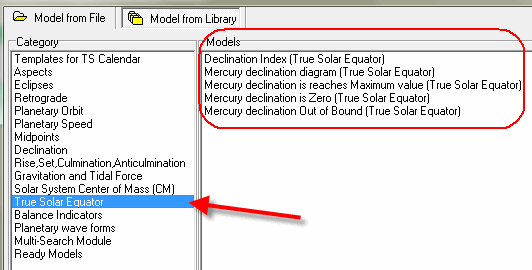
and
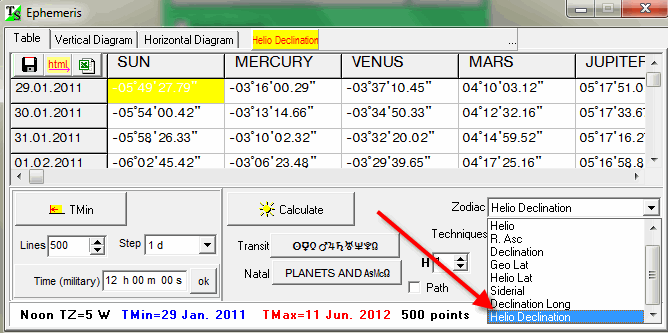
As an example, you can research the effect of a such phenomenon as "Venus heliocentric declination reaches its maximum value". The diagram below displays Venus heliocentric declination together with the moments when this declination reaches its maximum value (red vertical stripes):
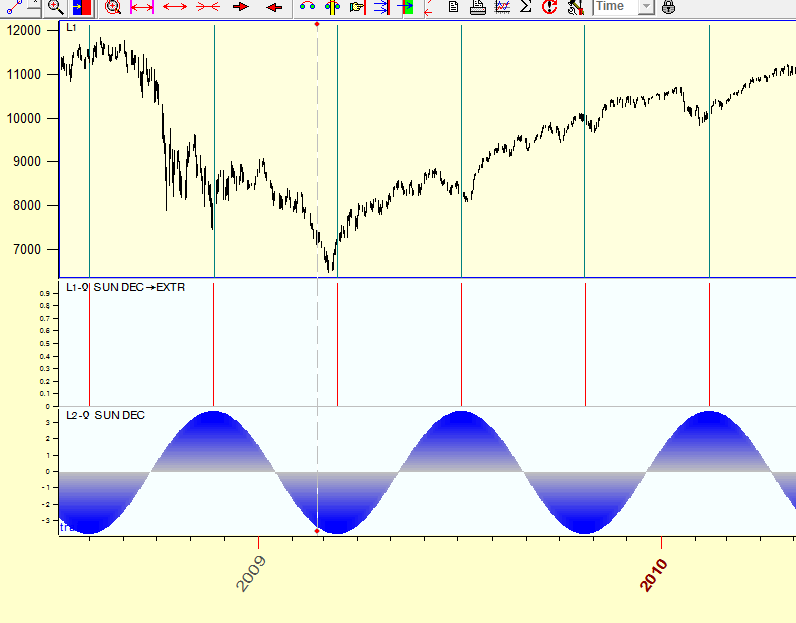
The summary effect of this phenomenon on Dow Jones Industrial Index is presented by the corresponding efficiency test diagram (downward effect):
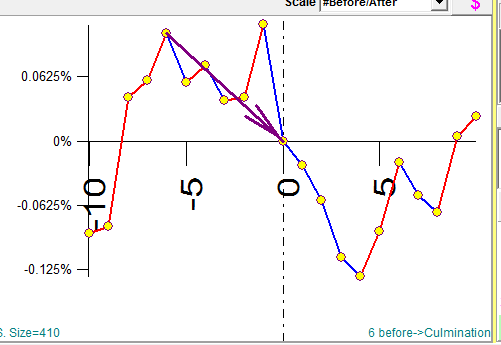
Another example - the heliocentric declination index (it is the sum of all planetary heliocentric declinations):
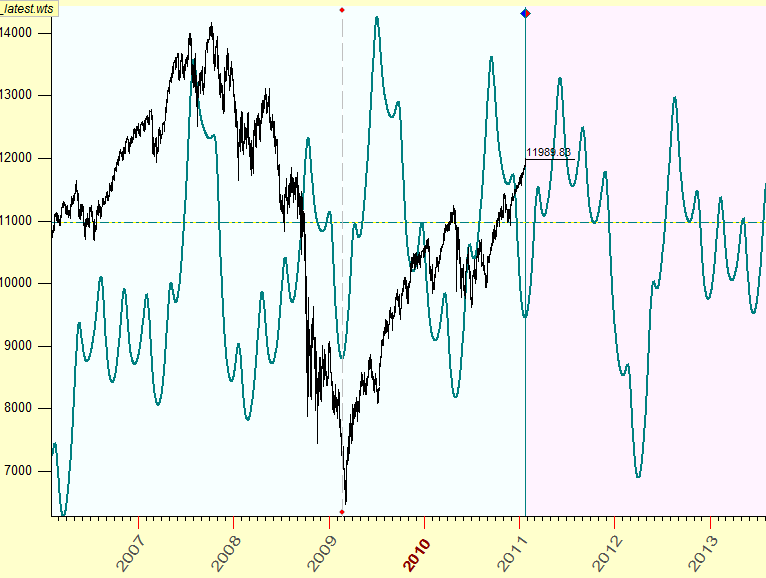
I know three variants of declination indexes, here they are:
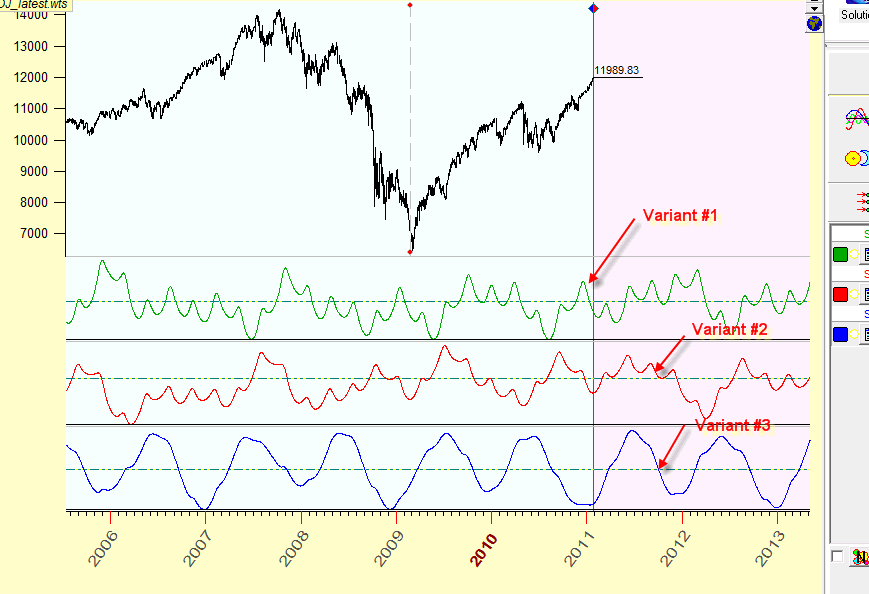
Variant #1: green - calculates the heliocentric longitude and finds the geocentric declination of the Sun that corresponds to this longitude. This method has not any astronomical sense.
Variant #2: red - based on heliocentric planetary declinations.
Variant #3: read - based on geocentric planetary declinations.
All calculations are based on data that are compared and confirmed by JPL data (special thanks to Jim Mertes).